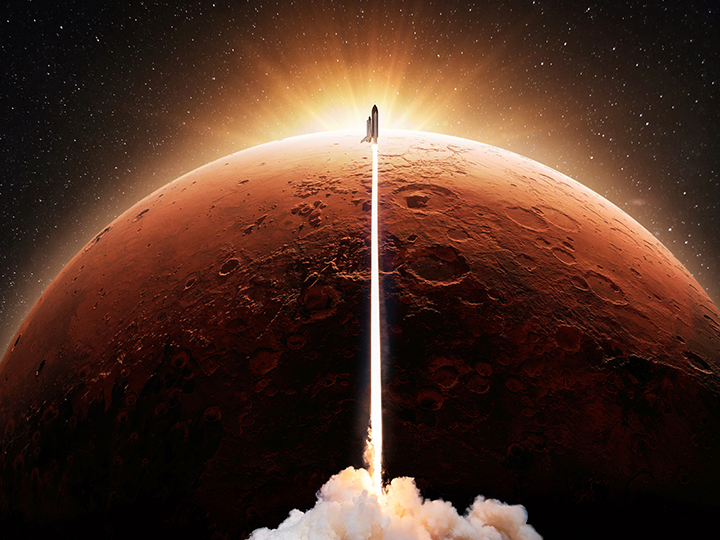
The moon is slowly moving away... So why is this happening?
The Moon is moving away from Earth, albeit slowly. So what does this event called "The Lunar Withdrawal" mean for Earth and humanity?
The Moon, with its orbit around the Earth, has been an object that has attracted our attention and interest throughout human history. While many civilizations created their calendars based on this space object, some animals found their way using the Sun's light reflected from the Moon.
More importantly, according to some theories, the Moon may have helped create the conditions that made life possible on our planet, and may even have helped to start life on Earth from the very beginning. Its orbit around our planet is also thought to play a role in some of the important weather systems that dominate our lives today.
But while all this is happening, the Moon is slowly moving away from our planet.
Moon moves away from Earth by 'Moon Retraction'
As it rotates around the Earth in its delicately balanced orbit, showing us only one side, it slowly moves away from our planet in a process known as the "Moon withdrawal." By firing lasers from reflectors placed on the Moon's surface by the astronauts of the Apollo missions, scientists have been able to measure with pinpoint accuracy how fast the Moon has recently receded.
It has been confirmed that the Moon is moving away from Earth at a rate of 3.8 cm per year. And as the Moon moves away like this, our days are getting a little longer.
"It's all about the tides," says David Waltham, professor of geophysics at Royal Holloway, University of London, who studies the relationship between the Moon and Earth. "Tidal drag on Earth slows its spin, and the Moon gains this energy as angular momentum."
Why is the Moon moving away from Earth?
As the Earth rotates, the orbiting Moon's gravity pulls on the oceans, creating high and low tides. These tides are actually a "bulge" of water that extends elliptically both towards and away from the Moon's gravity. But Earth rotates on its axis much faster than the Moon orbits above, meaning that friction from ocean basins moving beneath it drags water with it. This causes the bulge to move slightly ahead of its orbit trying to pull the Moon backwards. This slowly drains our planet's rotational energy, slowing its rotation while the Moon gains energy and causes it to move into a higher orbit.
According to recent analysis, this increased braking in our planet's rotation means that the length of an average Earth-day has increased by about 1.09 milliseconds per century since the late 1600s. Other estimates, drawing on earlier observations of eclipses, put that number slightly higher, to 1.78 ms per century.
Although this amount may seem very small, it indicates a profound change when considering the longevity of the planets.
The Moon is thought to have formed within the first 50 million years after the birth of the Solar System. The most widely accepted theory is that the collision between the embryonic Earth and another Mars-sized object known as Theia formed a pile of material and debris that brought together what we now call the Moon. It is clear from geological data preserved in rock strips on Earth that the Moon was much closer to Earth in the past than it is today.
The moon is currently 384,400 km from us. But a recent study shows that about 3.2 billion years ago, the Moon was only 270,000 km from Earth, or about 70% of its current distance.
This changing distance of the Moon and the Earth's much shorter day-night cycle (12 hours) may have caused the temperature difference on Earth to be much less and affected the rates of respiration and photosynthesis.
However, the rate of lunar withdrawal has not been constant throughout history, and although it has reached up to 7cm per year in some periods, we are currently in a period where it is faster compared to its general history.
Still, even at its current high rate of retreat, the Moon is unlikely to leave Earth entirely. The death of the Sun is predicted to occur in about 5-10 billion years, and the Moon, at its current speed, will not have left Earth orbit before this end.
But in the shorter term, humanity itself may play a role in making the days a little longer by reducing the amount of water trapped in and in glaciers due to climate change melting.
Theoretically, the next group of astronauts to fly to the Moon with NASA's Artemis program could say they're looking at their home planet from farther than their predecessors in the Apollo program 60 years ago.
For the rest of us, our lives are too short to notice the picoseconds added to the length of each passing day.
